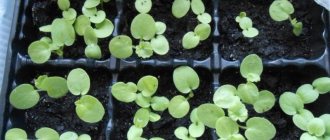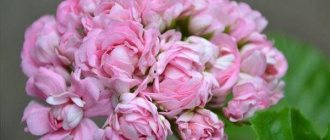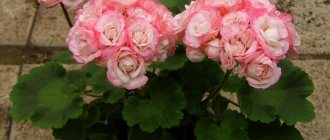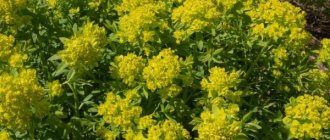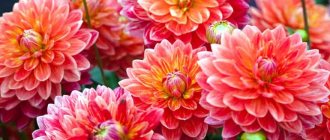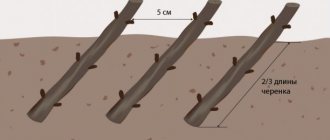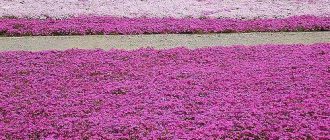Description
Pelargonium Lady Gertrude is a hybrid variety: the product of crossing ivy-leaved and zonal pelargoniums. As a result of breeding work, a very decorative, expressive variety was obtained, most reminiscent of a rose.
Lady Gertrude is a favorite among flower growers today. This amazing plant, being a pelargonium, can easily be confused with a rose. A spectacular decorative flower attracts attention at all exhibitions.
How to grow?
Pelargonium, like geranium, can be propagated at home in two different ways. Moreover, each has its own nuances.
Cuttings
The main advantage of this method is that it preserves all the unique properties and characteristics of the selected plant variety. The procurement of the material itself is carried out only from spring to early autumn. During the hibernation period of pelargonium, it is not recommended to collect cuttings.
For planting, it is best to choose stems with 3 true leaves, the length of which does not exceed 7 cm. After cutting from the bush, they are left in the fresh air to wilt easily for 2-3 hours. Before planting in a pot, the cut site is lightly treated with a special agent designed to stimulate the formation of the plant’s root system. As soil it is necessary to use only a special substrate intended for the Geraniaceae family.
The cuttings are placed in the center of the container so that there is at least 5 cm of soil under them; the container is also covered with substrate from top to the edges and watered. Place the seedlings in a well-lit place with a temperature of about 22 degrees above zero and leave for 15 days. If necessary, irrigate the seedlings, but water them at the root, without touching the leaves. After about a month, the flower will take root, and after another couple of weeks it should be planted in a larger container.
Sowing seeds
This cultivation of pelargonium at home is carried out from January to the end of February. If desired and special phytolamps are available, the procedure can be carried out in December. You can use peat tablets for planting. The advantage of this method is that there is no need for further picking of plants. The sequence of actions will be as follows.
- The tablets are soaked in warm water for 10-15 minutes.
- Place them on pallets close to each other.
- One seed is placed in each tablet. Sprinkle lightly with water on top.
- Crops are placed in a warm and well-lit place.
Seeds are laid out on the surface of the substrate and sprinkled with soil no more than 2 cm thick. The surface of the crops is irrigated with water. Place in a well-lit place without direct sunlight until seedlings emerge. Regularly monitor the humidity of the substrate - when its top layer dries, the seedlings are watered to the root. The temperature should be from 20 to 23 degrees above zero. Pelargonium picking is carried out when 2 true leaves appear. And when there are 5 of them, the flower is transplanted to a permanent place.
Appearance
Lady Gertrude boasts terry delicate petals of a light pink shade. As they bloom, the buds acquire a characteristic rose shape , which makes the blooming plant very impressive. The plant gives the impression of tenderness and airiness, but at the same time it is also quite life-loving and tolerates shortcomings of care and maintenance well.
On a note. The bush of the plant branches well and forms a compact, dense shape. The branches of this pelargonium try more to grow in width than in height, which allows you to form the desired shape of the bush without much difficulty.
About pelargonium Lara Harmony (Lara Harmony): description and characteristics of the variety, care
I haven’t compiled a catalog yet, but I have a list of my plants. Here he is.
Ainsdale Duck Anita rosebud
Brixworth Pearl compact zone Bold Minstrel
Bold Gold goldenfoilCarole MunroeCook's Scarlet and White rosebudDavinia Edwards Tamara
new
Edwards Christina
new
Edwards Blanche
new
Edwards Pleasure
new
Edwards Toscana
new
Edwards Romany Fischers Appleblossom rosebud Godshill stellar[/bHighfield's Charisma Highfield's Sugar Candy
Jägershus Mormor Märta Kenny's Double
Lauren Alexandra Lara Harmony
Lara Delight Lady Mavis Pilkinton Lara Suzanne
zonartik NorrlandOdensjö Suzie Wong
Odensjö Poetry In Motion
Odensjö Sofie Arden PAC Evka miniature ivy
PAC Viva Rosita PAC Viva Madelaine
Pink Vectis Sparkler stellar Powder Puff Rushmoor Golden Ruffles stellarRushmoor Golden Rosebud yellow leaf rosebu Santa Maria Centennial
ivy hybrid
Saxdalens Selma Unicorn Zonartic Rose Alex Kitson Gladys Weller Highfied,s Cameo Highfield,d Ballerina Highfield,s Prima Donna Jacky Gauld Jagershus Rod Rudolf PAC Aristo Petticoat Rio Grande Rose Down
Odensjö Mathilda IV — Sonya Nezhnaya Thornland's Marble Wood's SurpriseBold Beacon
More new items are expected! I'm looking forward to.
Unfortunately, certain family problems over the last 2 weeks have left virtually no time for flowers. I barely have time to water, and then late. Not everything that was supposed to be trimmed was trimmed. But I’ll definitely catch up! And the flowers sense the approach of spring perfectly. Uncut horses, miniatures and autumn cuttings are especially happy. Blooming! And even decently.
I'll show you a few photos of today's flowering. When there is still time.
Dwarf Ingrid/Crycksbo
. Tireless bloom. I have two plants, one stands in the south, the second winters in the north without lighting. Both are doing great, but the one in the north is not blooming yet.
Just Jip
. A beloved variety. One of those that feels great under the lamps. It grows and blooms well under them. It grows so well that it does not require pruning. I definitely won’t cut my plant, I’ll just transplant it into fresh soil. And such a hat. not small. Handsome!
Post edited by lenaxi
— Sep 18 2022, 22:24
https://7ogorod.ru/cvety/pelargonia-lara-harmony.htmlhttps://greensotka.ru/tsvetushchie/geran-makhrovaya.htmlhttps://forum.na-svyazi.ru/?showtopic=1456412&st=765
Photo
Check out the photo of the flower.
Pelargonium Lara Harmony
Pelargonium Lara Harmony is one of the most popular abundantly flowering plants today. It is easy to care for, so it often becomes a favorite and is grown on windowsills, flower beds, and small areas.
Lara Harmony belongs to the Terry Pelargonium (Geranium) variety. Belongs to the Geranaceae family, group - zonal. The species was formed due to small areas on each leaf - usually dark brown in color.
Interesting. The flowers of the variety, when fully opened, are incredibly similar to small roses, while the plant is less whimsical and tolerates various weather conditions well.
Necessary conditions for landing
Let's find out what requirements Lady Gertrude places on her habitat: what soil composition is important for her, the level of light, temperature and other nuances.
Location and lighting
Since the petals of this pelargonium are very delicate, direct sunlight should not affect them. And although Lady Gertrude needs good lighting, the pot with the plant should be shaded at midday. Note that with constant exposure to active sunlight on the leaves and petals, the latter become paler, the bush itself becomes smaller, looks sick, and inconspicuous.
Note! In order for the plant to bloom magnificently and develop safely, it needs about 4-8 hours of bright light per day.
It is recommended to place the container with this flower on western or eastern windowsills. The southern side with active sun and the dark northern side are not suitable for the plant. In winter, it is recommended to provide additional lighting for Gertrude so that the inflorescences form more actively.
Temperature
For the summer period, the plant is suitable for keeping at a temperature of +20-25 degrees. In winter, pelargonium needs coolness: +12-15 degrees would be the best option. Note that the plant cannot withstand heat and when the temperature rises to +30, flowering stops.
If the heat lasts for a long time, the plant may completely wither. When flowering, it is also important to prevent the petals from touching cold glass and to rid the plant of drafts. Otherwise, pelargonium will begin to drop flowers.
The soil
Pelargonium Lady Gertrude prefers to grow in loose, nutritious soil. It is necessary to avoid the presence of clay inclusions in the substrate, as they greatly weigh it down. Good drainage is important for the plant.
To ensure the outflow of water from the substrate to the bottom of the pot, be sure to place a layer of expanded clay pebbles or crushed bricks. The suitable substrate composition for this pelargonium is as follows:
- turf - 1 part;
- peat soil - 1 part;
- sand - 1 part.
In addition, the soil must have a neutral or slightly acidic reaction. Pelargonium will not grow in acidified soil.
Terry geranium - what kind of pelargonium is it?
Terry geranium (pelargonium) belongs to the Geraniaceae family. About 500 species of this plant are known. Today, breeders have bred geraniums in almost all colors of the rainbow and all kinds of shades.
Pebbles variety
This flower is native to South Africa. It was first bred in 1631 by an English botanist and was initially called geranium. Much later, in 1789, the current name appeared.
Terry geranium is a zonal variety of pelargonium. Large spherical inflorescences, resembling roses in appearance, are located on the upper branches of the plant. This species appeared in the middle of the 19th century.
For your information! Pelargonium terry is not related to the genus Geranium.
Variety Mimi
Features of the flower
Terry geranium with roses contains several corollas, each of which contains more than 8 petals. On a tall, thick, strong stem there are round leaves with wavy edges. In many geraniums, the edges of green leaves are framed by a thin rim of burgundy or purple. There are rare varieties with black, golden, bronze and purple leaves.
The diversity of species and varieties of Geraniaceae Pelargonium depends on changes in its genome. Sometimes this happens spontaneously. If a flower of a certain variety turns out to be different from the sample, then in such cases they say that pelargonium has acquired a sport. The shape and color of petals, leaves, stem size, density of inflorescences and much more change.
Note! Pelargonium purifies the air, drives away pests from neighboring plants, repels mosquitoes
Variety Mallorca
Care
Let us consider in detail the main points for caring for pelargonium Lady Gertrude.
Watering
- The plant requires moderate moisture: it is important to prevent the substrate from drying out and the formation of a swamp in the pot.
- Overwatering is especially dangerous for a flower, since its roots easily rot. It is recommended to water only when the top layer of soil becomes dry.
- In summer and spring, watering should be more frequent and abundant, and in winter and autumn the soil should be moistened less frequently.
- There is no need to spray the flowers, since it is able to accumulate moisture on its own. And drops that fall on the petals and leaves can leave unsightly stains on them, and at cool temperatures even lead to rotting.
- Water for irrigation should be settled and soft, its temperature should not be cool. When watering with cold water, the roots of the plant are much more likely to rot, especially if the temperature in the room is cool.
Top dressing
During the growing season, Lady Gertrude needs additional nutrition in the form of mineral complexes. It is important to know that during the flowering period it is necessary to apply only potassium-phosphorus compounds, avoiding nitrogen, since the latter component negatively affects the flowering of the plant.
The frequency of fertilization is approximately once every two weeks in summer; in winter, pelargonium does not need additional nutrition. In this case, it is better not to use organic matter for fertilizing: pelargonium Gertrude prefers mineral compositions. In rare cases, you can feed the plant with a weak solution of chicken manure.
Wintering
In winter, the plant somewhat loses its decorative effect, since the main decoration - flowers - are absent, and without them the bare stem looks lonely.
Important! In the cold season, Lady Gertrude pelargonium needs rest: it needs to be watered less, not fed, and kept at a temperature no higher than +15 degrees.
If the winter maintenance measures are followed, the plant will be able to form many flower stalks and will delight you with lush flowering in the summer.
Features of plant flowering
Pelargonium Millfield Rose (Milfield Rose)
The flowering of pelargonium of this variety begins later compared to other types of plants. Usually the first buds appear in mid-July. Flowering lasts until mid-autumn.
Period of activity and rest
From mid-October, pelargonium begins to prepare for the dormant period. It is first recommended to trim dry flower stalks and stop applying fertilizers. In winter, the plant stores strength for the next year. It should not be moved to a new location.
At the same time, the number of waterings is reduced, preventing prolonged drought. The duration of daylight hours is reduced by 1-2 hours.
In mid-spring, the flower is brought out of its dormant period. Watering becomes more frequent. Phytolamps are used to correct lighting. At the end of spring, the crop can be replanted and fed.
Types and shape of flowers
Pelargonium Gertrude has beautiful double inflorescences of light pink color. As the buds bloom, they become like a rose. Thanks to this, the bushes look attractive.
With proper care, the crop blooms beautifully
Possible problems
Almost all problems that arise when growing Lady Gertrude pelargonium arise from the lack of proper care for it. Next, we will consider the most common health and well-being problems with this plant. We will also tell you how to cope with diseases.
With leaves
If a yellow edging appears on the tips of the plant's leaves, this indicates a nutritional deficiency problem. If such a symptom is detected, be sure to feed the pelargonium with mineral compounds with phosphorus and potassium. If the color of the foliage changes to an uncharacteristic reddish color, this may indicate a lack of magnesium in the soil or that the air temperature is too cool.
Pests
When spider mites appear on pelargonium, the leaves become deformed : swellings, bumps, and dry areas appear on them. If spots of different shades appear on the leaves: yellowish, whitish, beige, this means that the plant has been occupied by aphids. Insecticidal preparations will help to cope with pests.
Diseases
Pelargonium Lady Gertrude, of all the diseases dangerous to these flowers, is more prone to bacterial varieties. Thus, a disease such as black rot often occurs. Pathology manifests itself as blackening of the root, stem, and then leaves.
As a result of this disease, the entire plant dies, and there is no cure for it. Rot can only be prevented by disinfecting the soil before planting and preventing it from becoming waterlogged. Powdery mildew is also dangerous for this pelargonium. The disease manifests itself as a whitish coating on the leaves, and systemic fungicidal preparations will help cope with the scourge.
Slow growth and development
In addition to the above, pelargonium may also experience growth problems. Such defects also have their own reasons - we will consider them further.
Note! Poor, slow flower growth is usually observed when the soil is infected with parasites, as well as when the acidity level of the latter is inappropriate.
If the plant grows very tall but does not bush, the problem is a lack of sunlight. Move the pot to a brighter place. Slow growth along with yellow foliage may indicate a lack of nitrogenous minerals. In this case, feed the pelargonium with appropriate fertilizers.
If the plant stretches too long, this indicates:
- excessive watering;
- excessive feeding;
- no pinching.
The best varieties of terry pelargonium for growing at home
There are many different varieties of terry geraniums, which gardeners are happy to grow in rooms, gardens, flower beds, and summer cottages. In their descriptions, a lot of attention is paid to the color of the petals and the size of the bush.
Pelargonium Pebbles
Pelargonium Pebbles has crimson flowers with a white center. The back of the petals is white. The plant is very small, so it does not require abundant watering. It bushes actively and does not need to be shaped. The lower leaves never dry out. In bright light, a dark green spot appears in the middle of the leaf.
Saxdalens Selma
Pelargonium Mimi
Miniature pelargonium Mimi is distinguished by its pink-fawn petals. It actively blooms and grows; it is not necessary to form it. You can prune the branches a little to make the bush compact. Pelargonium Mimi is ideal for a greenhouse, room, flower bed.
Pelargonium Mallorca
Incredibly beautiful, bright Mallorca pelargonium is characterized by its small height. Its petals are painted in 2 colors: white and pink, sometimes red. Pelargonium Mallorca grows quickly and spreads widely, so its branches need to be periodically pruned.
Note! This variety should not be confused with the Majorca variety, which is topped with pale pink or white flowers. Mallorca is a zonal species, and Mallorca pelargonium is a cactus species.
Silk Moira
Pelargonium Saxdalens Selma
Pink flight flowers on a small bush are a distinctive feature of Selma pelargonium. The back side of the petal is slightly lighter. The flowers form very large and dense inflorescences, so the plant looks like a rose. Selma is a zonal pelargonium. It will decorate any flower bed, garden or room. Due to its external resemblance to a rose, the flower looks luxurious.
Silk Moira
The light apricot shade of the petals is the pride of the Shelk Moira variety. A light green circle is visible in the center of each leaf. A miniature bush with a dense inflorescence looks elegant and resembles a bouquet of roses.
Brookside Fantasy
A very small bush with lilac or soft pink flowers suitable for growing in pots on a windowsill. The leaves have an unusual color: in the center and along the edges they are light green, and in the center there is a ring of a darker shade.
Brookside Fantasy
Bold Carmine
Bright red, crimson, burgundy flowers are a distinctive feature of the Bold Carmine variety. They bloom actively, abundantly, luxuriantly, and bush quickly. This is one of the most profusely flowering varieties.
Geranium Majesta
Majesta is a pelargonium with bright, juicy petals of a reddish-purple color. Lush, dense inflorescences decorate a low bush that branches and grows well.
Ludwigsburger Flair
The light pink and white flowers of Ludwigsburger Flair look charming. There is a green core in the center. The reverse side of the petal is white or very light. The peculiarity of this variety is that it does not tolerate dry air, low temperatures and open solar radiation. It needs a little shade.
Bold Carmine
Lara Harmony
Pink or crimson flowers make Lara Harmony look like rose bushes. The inflorescences are thick and dense, the bush is actively growing. The plant requires careful treatment and good care.
White terry geranium is a favorite of many gardeners. She looks tender, pure, defenseless. This plant blooms from March to November, actively grows and branches. You can choose the following types of white pelargonium:
- Ise Rose;
- Jacky Gauld;
- Joan of Arc;
- PAC Blanche Roche;
- PAC Viva Carolina.
Geranium Himalayan Plenum belongs to the Geranium family, but is also a double flower. Its lush purple petals form large inflorescences on a tall bush. This plant can be grown in the garden or flower bed.
For your information! The name Pelargonium means “stork” in ancient Greek. The plant was named so because the shape of the petals and seed pod resembled the beak of a stork.
Majesta
Reproduction
This pelargonium can be propagated either by seed or by cuttings. At home, the second method is preferable, since it is simpler and its result is more predictable. With this method of reproduction, it is recommended to choose either spring or summer.
To get a full-fledged healthy cutting you need:
- Cut off the apical part of the mother shoot, approximately 6-7 cm long. The cutting should be strong and partially woody, and there should be three to four internodes on its trunk.
- Dry the cuttings a little and then root them in the prepared soil.
- After 2-4 weeks, the shoot takes root, and after that it can be carefully transplanted into a permanent pot.
The cutting must germinate in a well-lit and warm place, otherwise its roots may rot.
Do you want to know more about other popular varieties of pelargonium? On our portal you will find articles about such species as: Richard Hudson, Ludwigsburg Flyer, Rose Zonartik, PAK Viva Rosita, Prince Gustav, Angel, April Snow, Star, Denise, Rococo.
How to care for pelargonium at home after purchase
Geranium is a very heat-loving perennial plant that does not tolerate temperatures dropping to 0 °C. It needs room temperature, good lighting, and regular watering. The plant requires simple care and good conditions. It can be grown both in pots and in open ground.
If the lighting is not enough, you need to illuminate the pelargonium with a lamp. It is worth watering with filtered or infused slightly warm water. In spring and summer, geraniums are watered once every three days, and in autumn and winter - once every 10 days or 2 weeks. Water should not stagnate in the pan. You cannot spray geranium. The plant needs to be trimmed 1-2 times a year as it grows.
Is a transplant necessary?
Pelargonium needs to be replanted when its roots grow and the pot becomes too small for it. It can be replanted in early spring: from late February to April. Initially, this plant needs to be planted in a small pot.
How to determine if it's time to replant geraniums:
- the flower grows too slowly;
- the soil dries out quickly;
- roots are coming out of the pot.
To replant a geranium, you need to remove it from the pot along with the root and soil and place everything in a new pot with ready-made soil. After planting, the flower is watered, then placed in a bright place where there are no drafts.
What should the soil be like?
Terry geranium loves light soil types that can conduct air. The acidity level (pH) should be 5.5–6.5. You can prepare soil from several components:
The soil is also suitable for succulents. Experienced flower growers say that it is better to prepare the soil yourself, but this takes time. All components must rest for a year, then they must be sterilized, dried, sifted
It is very important to mix the soil components in the required proportions. Good drainage is also needed. Important! Purchased soils have a sufficient degree of fertility suitable for geraniums
In stores you can find special mixtures for pelargoniums.
Important! Purchased soils have a sufficient degree of fertility suitable for geraniums. In stores you can find special mixtures for pelargoniums.
White terry geranium
